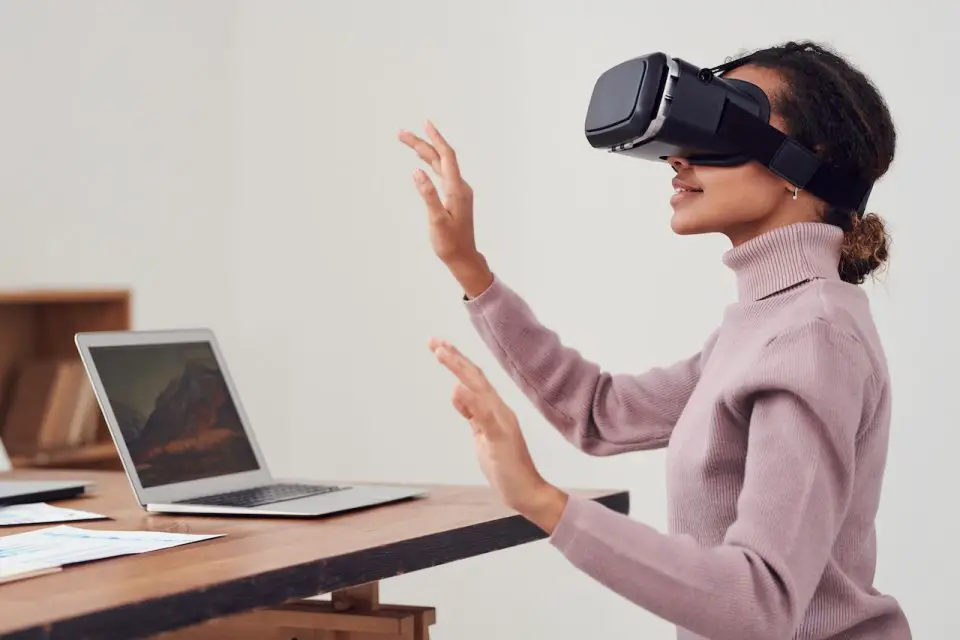Meta CEO Mark Zuckerberg took center stage at the Meta Connect conference on Wednesday, revealing two groundbreaking high-tech devices poised to reshape the digital landscape: the AR/VR-powered Meta Quest 3 and the Ray-Ban Meta smart glasses.
These innovations mark a significant stride in Meta’s mission to prioritize the metaverse. The Quest 3 showcases Meta’s vision of seamlessly blending the virtual and physical realms, while the smart glasses exemplify the integration of cutting-edge technology into a lightweight eyewear format.
However, Meta’s bold venture comes at a considerable cost. The company’s Reality Labs division has reported staggering annual losses, with the most recent quarter alone tallying $3.7 billion. The success of these headsets is pivotal for Meta to establish itself as a metaverse-centric entity.
Having had the opportunity to experience both the Quest 3 and smart glasses at a preview event preceding the conference, it is evident that Meta has made commendable strides in their development. Yet, the company faces formidable competition from traditional gaming platforms, along with impending releases such as Apple’s Vision Pro.
The Meta Quest 3, available starting at $499, boasts a host of enhancements over its predecessor, including a sleeker design and sharper visual output. Priced at $299, the Ray-Ban Meta smart glasses feature an updated appearance and enhanced cameras for superior photo and video capture. The Quest 3 hits both online and physical stores on Oct. 10, while the glasses will be available for purchase on Oct. 17.
Distinguished from previous Quest iterations, the Quest 3 is tailored for both virtual and augmented reality experiences. This is exemplified by the improved passthrough mode, employing external cameras to generate a real-time feed of the user’s surroundings onto the Quest 3’s internal displays.
This innovative feature facilitates interaction with digital elements seamlessly integrated into the real world. In a compelling demonstration, an extraterrestrial vessel dramatically crashed through the room’s ceiling, immersing the observer in an alien environment. Another showcased the iconic Stay Puft Marshmallow Man from “Ghostbusters” peering into a virtual living space.
The introduction of “augments” allows users to customize their mixed reality environment, akin to digital ornaments suspended in the physical realm. These augmentations, ranging from bobbleheads to weather widgets, persist in the digital space even when the headset is removed.
The Quest 3’s display resolution, 30% superior to its predecessor, delivers vivid and vibrant visuals. Notably, on-screen text is more legible, and intricate details like control panel textures are more pronounced. The passthrough feature expands the Quest 3’s capabilities, offering a new dimension of possibilities.
Despite these advancements, the graphics may still fall short of the standards set by modern gaming consoles and PCs. Priced at $499, the Quest 3 contends with established gaming giants like Sony’s PlayStation 5 and Microsoft’s Xbox Series X, both of which boast extensive game libraries.
In the realm of mixed reality headsets, Meta leads the charge, particularly with its Quest line, including the widely successful Quest 2 released in October 2020. To date, Meta has sold approximately 20 million units, according to The Verge, while Sony has moved 40 million PS5 consoles since November 2020.
In tandem with the Quest 3, Zuckerberg introduced the Ray-Ban Meta smart glasses, succeeding Meta’s Ray-Ban Stories. These glasses are equipped with cameras, speakers, and microphones, representing a significant leap forward in wearable technology.
The second-generation smart glasses feature enhanced 12-megapixel cameras for higher resolution imagery and video, an upgraded speaker system, and an additional Headliner style in addition to the original Wayfarer design.
The Ray-Ban Meta smart glasses offer up to four hours of mixed use, encompassing photography, videography, music playback, and more. Notably, Meta has addressed previous issues with the charging case, now incorporating a secure magnet-style charger.
Regarding safety and security, Meta has enlarged the outward-facing LED indicator signaling when photos or videos are being captured. This hardware-based system ensures the indicator cannot be tampered with to capture media covertly.
As Meta ventures forth with these ambitious products, the company faces the challenge of sustaining consumer interest. The Quest 3 and smart glasses stand as pivotal milestones in Zuckerberg’s vision of the metaverse, heralding a new era in digital interaction.
Source: Yahoo Finance

